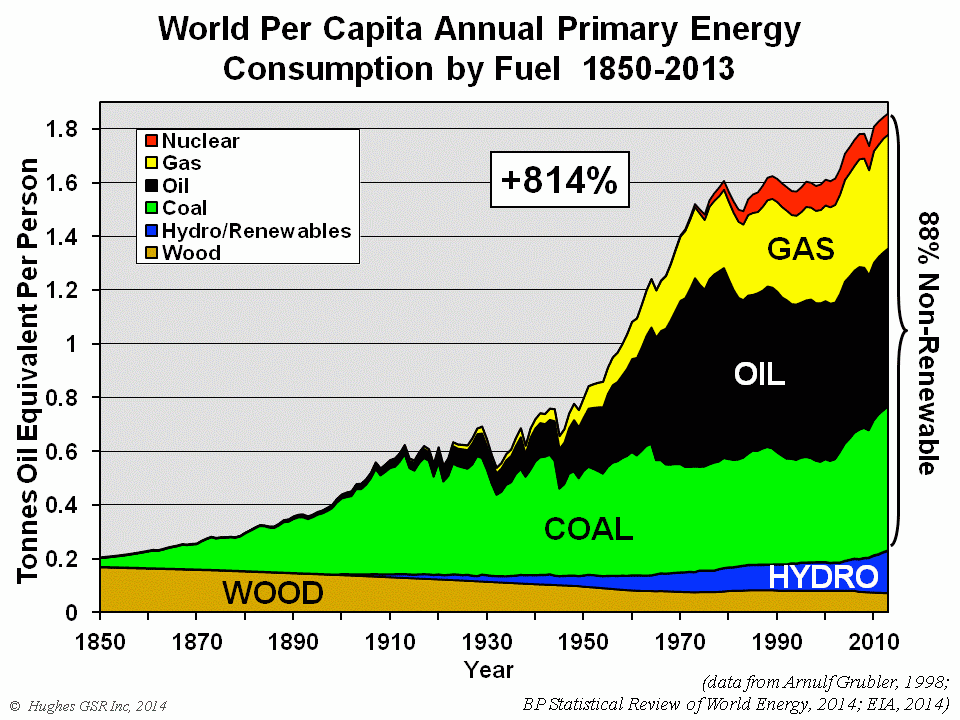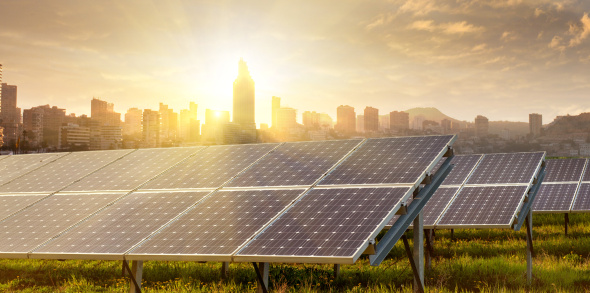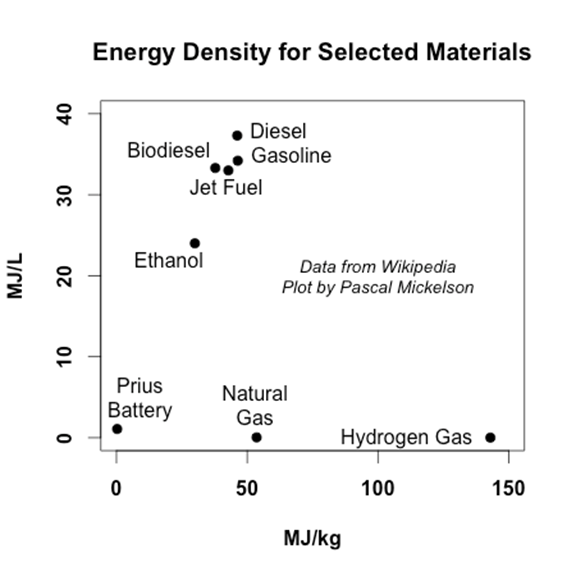MuseLetter #272 / January 2015 by Richard Heinberg
Download printable PDF version here (PDF, 281 KB)
Happy New Year! I’m kicking off 2015 with Part 1 of an extended essay looking at our energy future. What really lies ahead?
Our Renewable Future Or, What I’ve Learned in 12 Years Writing about Energy
Folks who pay attention to energy and climate issues are regularly treated to two competing depictions of society’s energy options.* On one hand, the fossil fuel industry claims that its products deliver unique economic benefits, and that giving up coal, oil, and natural gas in favor of renewable energy sources like solar and wind will entail sacrifice and suffering (this gives a flavor of their argument). Saving the climate may not be worth the trouble, they say, unless we can find affordable ways to capture and sequester carbon as we continue burning fossil fuels.
On the other hand, at least some renewable energy proponents tell us there is plenty of wind and sun, the fuel is free, and the only thing standing between us and a climate-protected world of plentiful, sustainable, “green” energy, jobs, and economic growth is the political clout of the coal, oil, and gas industries (here is a taste of that line of thought).
Which message is right? Will our energy future be fueled by fossils (with or without carbon capture technology), or powered by abundant, renewable wind and sunlight? Does the truth lie somewhere between these extremes—that is, does an “all of the above” energy future await us? Or is our energy destiny located in a Terra Incognita that neither fossil fuel promoters nor renewable energy advocates talk much about? As maddening as it may be, the latter conclusion may be the one best supported by the facts.
If that uncharted land had a motto, it might be, “How we use energy is as important as how we get it.”
1. Unburnable Fossils and Intermittent Electricity
Let’s start with the claim that giving up coal, oil, and gas will hurl us back to the Stone Age. It’s true that fossil fuels have offered extraordinary economic benefits. The cheap, concentrated, and portable energy stored in these remarkable substances opened the way, during the past couple of centuries, for industrial expansion on a scale previously inconceivable. Why not just continue burning fossil fuels, then? Over the long term that is simply not an option, for two decisive reasons.
First, burning fossil fuels is changing the climate to such a degree, and at such a pace, that economic as well as ecological ruin may ensue within the lifetimes of today’s schoolchildren. The science is in: either we go cold turkey on our coal, oil, and gas addictions, or we risk raising the planet’s temperature to a level incompatible with the continued existence of civilization.
Second, these are depleting, non-renewable sources of energy. We have harvested them using the low-hanging fruit principle, which means that further increments of extraction will entail rising costs (for example, the oil industry’s costs for exploration and production have recently been soaring at nearly 11 percent per year) as well as worsening environmental risks. This problem has been sneaking up on us over the last ten years, as sputtering conventional oil and natural gas production set the stage for the Great Recession and the expensive (and environmentally destructive) practices of “fracking” and tar sands mining. Despite the recent plunge in oil prices the fossil fuel party is indeed over. Sooner or later the stark reality of declining fossil energy availability will rivet everyone’s attention: we are overwhelmingly dependent on these fuels for nearly everything we eat, consume, use, and trade, and—as Americans started to learn in the 1970s as a result of a couple nasty oil shocks—the withdrawal symptoms are killer.
So while fossil fuel promoters are right in saying that coal, oil, and gas are essential to our current economy, what they omit mentioning is actually more crucial if we care how our world will look more than a few years into the future.
Well then, are the most enthusiastic of the solar and wind boosters correct in claiming that renewable energy sources are ready to substitute for coal, oil, and gas quickly enough and in sufficient quantity to keep the global economy growing? There’s a hitch here, which critics are only too quick to point out. We’ve designed our energy consumption patterns to take advantage of controllable inputs. Need more power? If you’re relying on coal for energy, just shovel more fuel into the boiler. But solar and wind are different: they are available on Nature’s terms, not ours. Sometimes the sun is shining or the wind is blowing, sometimes not. Energy geeks have a vocabulary to describe this—they say solar and wind power are intermittent, variable, stochastic, or chaotic.

Variability of wind generation in Germany for 2012 (source: European Energy Exchange)
There are ways of buffering this variability: we can store energy from renewable sources with batteries or flywheels, or pump water uphill so as to recapture its potential energy later when it flows back downstream; or we can build a massive super-grid with robustly redundant generating capacity so that, when sun and wind aren’t available in one region, another region can cover demand throughout the entire interconnected system. But these strategies cost money and energy, and add layers of complexity and vulnerability to what is already the largest machine ever built (i.e., the power grid).
Crucially, a recent study by Weissbach et al. compared the full-lifecycle energy economics of various types of power plants and found that once the intermittency of solar and wind energy is buffered by storage technologies, these sources become far less efficient than coal, natural gas, or nuclear plants; indeed, once storage is added, solar and wind fall “below the economical threshold” of long-term viability, regardless of the falling dollar price of panels and turbines themselves. The problem lies in the fact that the amount of energy embodied in the full generation-storage system cannot be repaid, with a substantial energy profit, by that system over its lifetime. Recent operational studies of solar PV systems in Spain and Australia have come to similar conclusions.
Another way to deal with variability is demand management, which can take a variety of forms (I’ll be discussing some of those later in a fair amount of detail). These all, by definition, mean changing the ways we use energy. But for the moment let’s stay with the subject of energy supply.
Early increments of solar and wind power are easy and cheap to integrate into the existing electricity distribution system because power from gas-fired peaking plants can quickly (literally, by the minute) be ramped up or down to accommodate these new, small, variable inputs while also matching changing overall demand levels. In this case, the price of wind and solar energy gets counted as just the immediate cost of building, installing, and maintaining turbines and panels. And, as the New York Times recently noted, the price of electricity from renewables (counted this way) is now often competitive with electricity from fossil fuels. On this basis, solar and wind are disruptive technologies: they’re getting cheaper while fossil fuels can only grow costlier. This one clear economic advantage of renewable energy—free “fuel” in the forms of sunlight and wind—is decisive, as Germany is now seeing with falling wholesale electricity prices (though retail prices are rising due to feed-in tariffs that require the utility industry to pay above-market prices for renewable electricity).
But as electricity from variable renewables makes up a larger and larger proportion of all power generated, the requirements for energy storage technologies, capacity redundancy, and grid upgrades will inevitably climb; indeed, beyond a certain point, the scale of needed investment is likely to explode. Grid managers tend to say that the inflection point arrives when solar and wind power provide about 30 percent of total electricity demand, though one computer model suggests it could be put off until 80 percent market penetration is achieved. (For two contrasting views on the question of how expensive and difficult intermittency makes the renewables transition—from renewable energy optimists Jacobson and Delucchi on one hand, and from “The Simpler Way” advocate Ted Trainer on the other—see a highly informative peer-reviewed exchange here, here, and here.) The looming need for investment in storage and grid upgrades is part of the reason some electric utility companies are starting to wage war against renewables (another part is that net metering puts utilities at a disadvantage relative to solar homeowners; still another is simply that fossil fuel interests hate competition from solar and wind on general principle). As solar panels get cheaper, more homes and businesses install them; this imposes intermittency-smoothing costs on utility companies, which then raise retail prices to ratepayers. The latter then have even more of an incentive to install self-contained, battery-backed solar and abandon the grid altogether, leading to a utility “death spiral.”
Yet renewable energy technologies currently require fossil fuels for their construction and deployment, so in effect they are functioning as a parasite on the back of the older energy infrastructure. The question is, can they survive the death of their host?
2. The Liquid Fuels Substitution Quandary
So far, we’ve talked only about electricity. The power generation sector arguably represents the easiest phase of the overall energy transition (since alternative technologies do exist, even if they’re problematic)—but only about 22 percent of global energy is consumed in the form of electrical power; in the US the figure is 33 percent. Our biggest single energy source is oil, which fuels nearly all transportation. Transport is central to trade, which in turn is the beating heart of the global market economy. Oil also fuels the agricultural sector, and eating is fairly important to most of us. Of the three main fossil fuels, oil is showing the most immediate signs of depletion, and renewable options for replacing it are fairly dismal.
It is possible to electrify much of our transportation, and electric cars are now decorating showrooms. But they have a minuscule market share and, at the current growth rate, will take many decades to oust conventional gasoline-fueled automobiles (some analysts believe that growth rate will soon increase dramatically). In any case, batteries do not do well in large, heavy vehicles. The reason has to do with energy density: an electric battery typically is able to store and deliver only about 0.1 to 0.5 megajoules of energy per kilogram; thus, compared to gasoline or diesel (at 44 to 48 MJ/kg), it is very heavy in relation to its energy output. Some breakthroughs in battery storage density and price appear to be on the horizon, but even with these improvements the problem remains: the theoretical maximum energy storage for batteries (about 5 MJ/kg) is still far below the energy density of oil. Neither long-haul trucking nor container shipping is ever likely to be electrified on any significant scale, and electric airliners are simply a non-starter.
Energy storage density by weight (horizontal axis) and volume (vertical axis) for selected media. A hypothetical ideal energy storage medium would appear in the upper right-hand corner of the graph. (Source: Pascal Mickelson)
The promise of biofuels as a direct substitute for petroleum was widely touted a decade ago, but we hear much less on that score these days. It turns out that enormous subsidies are needed because the processes for producing these fuels are highly energy intensive. This goes for second-generation cellulosic ethanol and biodiesel from algae as well. Research into synthetic biology pathways to biofuel production remains in its infancy.
Hydrogen offers a medium for storing energy in a way that can be used to power vehicles (among other things), and Toyota is about to release its first commercial hydrogen-powered car. But if we produce hydrogen with renewable energy, that means making H2 from water using solar or wind-based electricity; unfortunately, this is an expensive way to go about it (most commercially produced hydrogen is currently made from natural gas, because the gas-reforming process is inherently more efficient and therefore almost always cheaper than electrolysis, regardless of the electricity source).
These problems lead some energy analysts to propose a cheaper alternative to oil: why not transition the transport fleet to burn compressed natural gas, which government and industry tell us is abundant and climate-friendly? Unfortunately this is no solution at all over the long term. Globally, natural gas may be available in quantity for several more decades, but optimistic forecasts of “100 years” of abundant US domestic gas supplies are proving to be unfounded, and methane leakage from production and transmission infrastructure may end up making gas even worse for the climate than oil.
3. How much energy will we have?
The question is inescapable: will our renewable future offer less mobility? If so, this in itself would have enormous implications for the economy and for daily life. Another question arising from all of the above: will the quantity of energy available in our renewable-energy future match energy demand forecasts based on consumption trends in recent decades? There are too many variables to permit a remotely accurate estimate of how much less energy we might have to work with (we simply don’t know how quickly renewable energy technology will evolve, or how much capital investment will materialize). However, it’s good to keep in mind the fact that the energy transition of the 19th and 20th centuries was additive: we just kept piling new energy sources on top of existing ones (we started with firewood, then added coal, oil, hydropower, natural gas, and nuclear); further, it was driven by economic opportunity. In contrast, the energy transition of the 21st century will entail the replacement of our existing primary energy sources, and it may largely be driven either by government policy or by crisis (fuel scarcity, climate-induced weather disasters, or economic decline).

The additive history of energy sources (source: David Hughes)
Even supply forecasts from renewable energy optimists who tell us that intermittency is affordably solvable typically assume we will have less available electrical energy, once the shift away from fossil fuels is complete, than the International Energy Agency estimates that we would otherwise want (for example, analysis by Lund and Mathieson projects energy consumption levels in 2030 in Denmark to be only 11 percent higher than 2004 demand, with no further increase between 2030 and 2050, whereas IEA forecasts assume continued demand growth through mid-century). However, if (as the Weissbach study suggests) intermittency is in fact a serious economic burden for solar and wind power over the long term, then we need to entertain the likelihood that energy supplies available at the end of the century may be smaller—maybe considerably smaller—than they are now.
At the same time, the qualities of our energy supply will differ from what we are used to. As explained earlier, solar and wind are intermittent, unlike fossil energy supplies. Further, while planet Earth is blessed with lots of wind and sunlight, these are diffuse energy sources that need collecting and concentrating if they’re to operate heavy machinery. During the coming energy transition, we will be shifting from energy sources with a small geographic footprint (e.g., a natural gas well) toward ones with larger footprints (wind and solar farms collecting ambient sources of energy). True, we can cut the effective footprint of solar by using existing rooftops, and wind turbines can share space with food crops. Nevertheless, there will be unavoidable costs, inefficiencies, and environmental impacts resulting from the increasing geographical extent of energy collection activities.
The potency of fossil fuels derives from the fact that Nature did all the prior work of taking energy from sunlight, storing it in chemical bonds within plants, then gathering those ancient plants and transforming and concentrating their chemical energy, using enormous heat and pressure, over millions of years. Renewable energy technologies represent attempts to gather and concentrate ambient energy in present time, substituting built capital for Nature’s free gifts.
Moreover, while electrical power is easily transported via the grid, this doesn’t change the fact that sunlight, hydropower, biomass, and wind are more available in some places than others. Long-distance electricity transmission entails infrastructure costs and energy losses, while transporting biomass more than a hundred miles or so typically erases the crucial energy profitability of its use.
Part 2 next month.
________
*For the sake of simplicity, I have omitted discussion of nuclear power from this essay. There are those who say that nuclear power will, or should, play a prominent role in our energy future. I disagree with this view. Globally, nuclear power—unlike solar and wind—is contracting, not growing (China provides one of only a few exceptions to this observation). Nations are turning away from nuclear power due to the high levels of required investment—which, in virtually every case, must be underwritten by government. They are doing so also because of the high perceived risk of accidents—especially since the commencement of the ongoing catastrophe at the Fukushima nuclear facility in Japan. Nuclear boosters advocate new fuels (thorium) or technologies (fast breeder reactors) to address these concerns. But many years of trials will be needed before these alternatives are ready to be deployed at scale; and it is unclear, even then, whether they will live up to claims and expectations.
Solar city image via shutterstock.
![[Power book cover]](https://richardheinberg.com/wp-content/uploads/2021/03/cover_POWERcatalog-proof_300x450.jpg)


